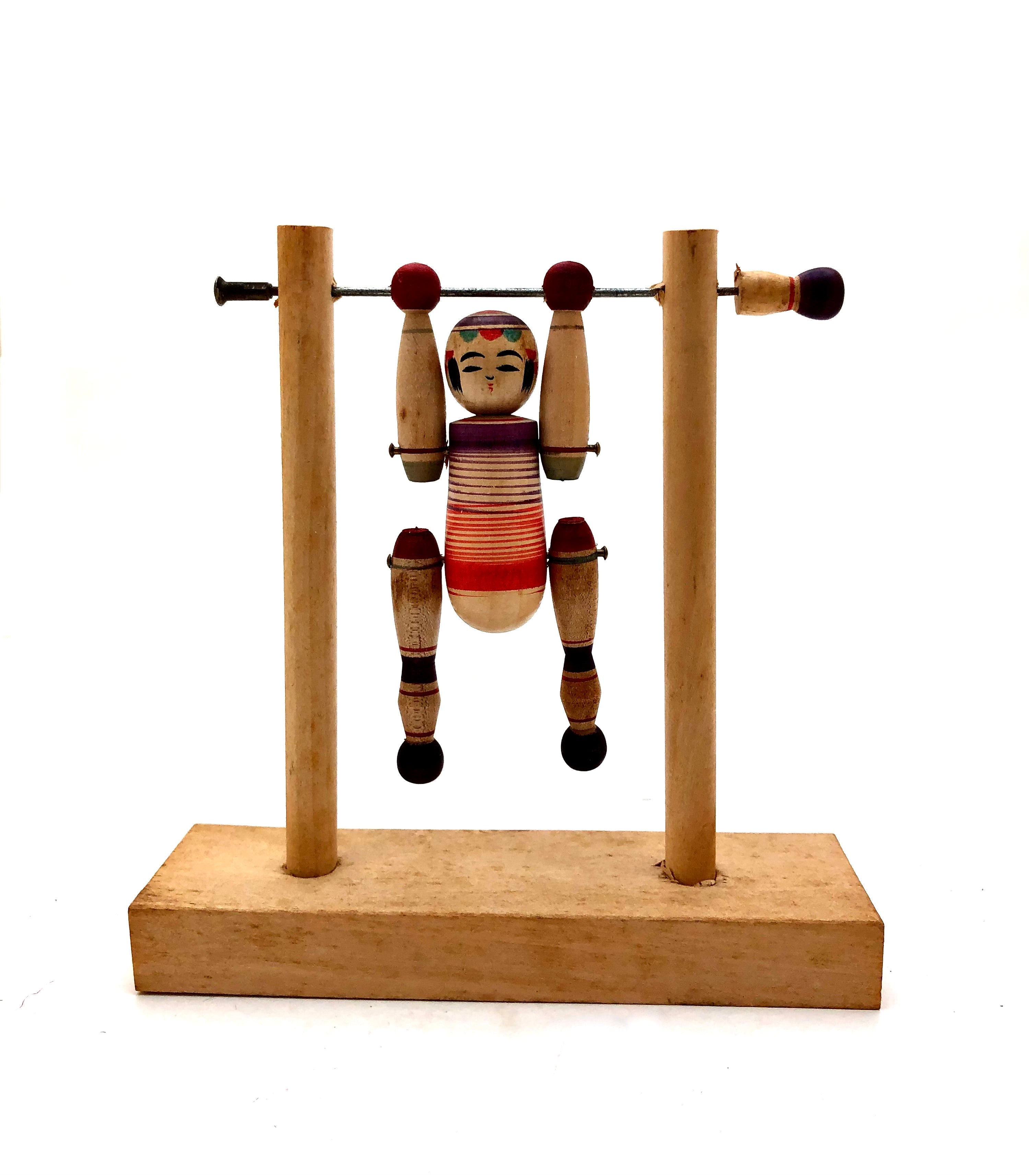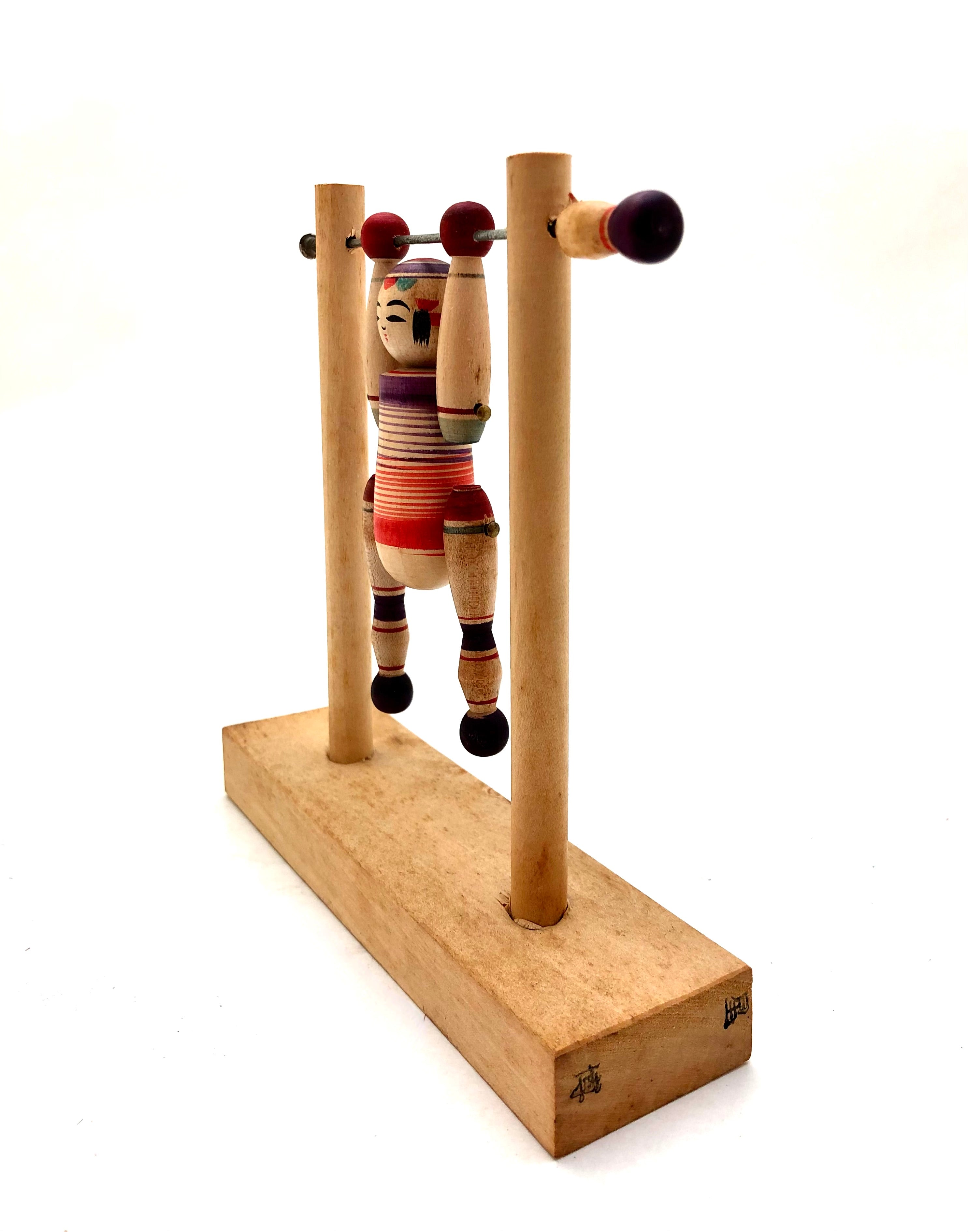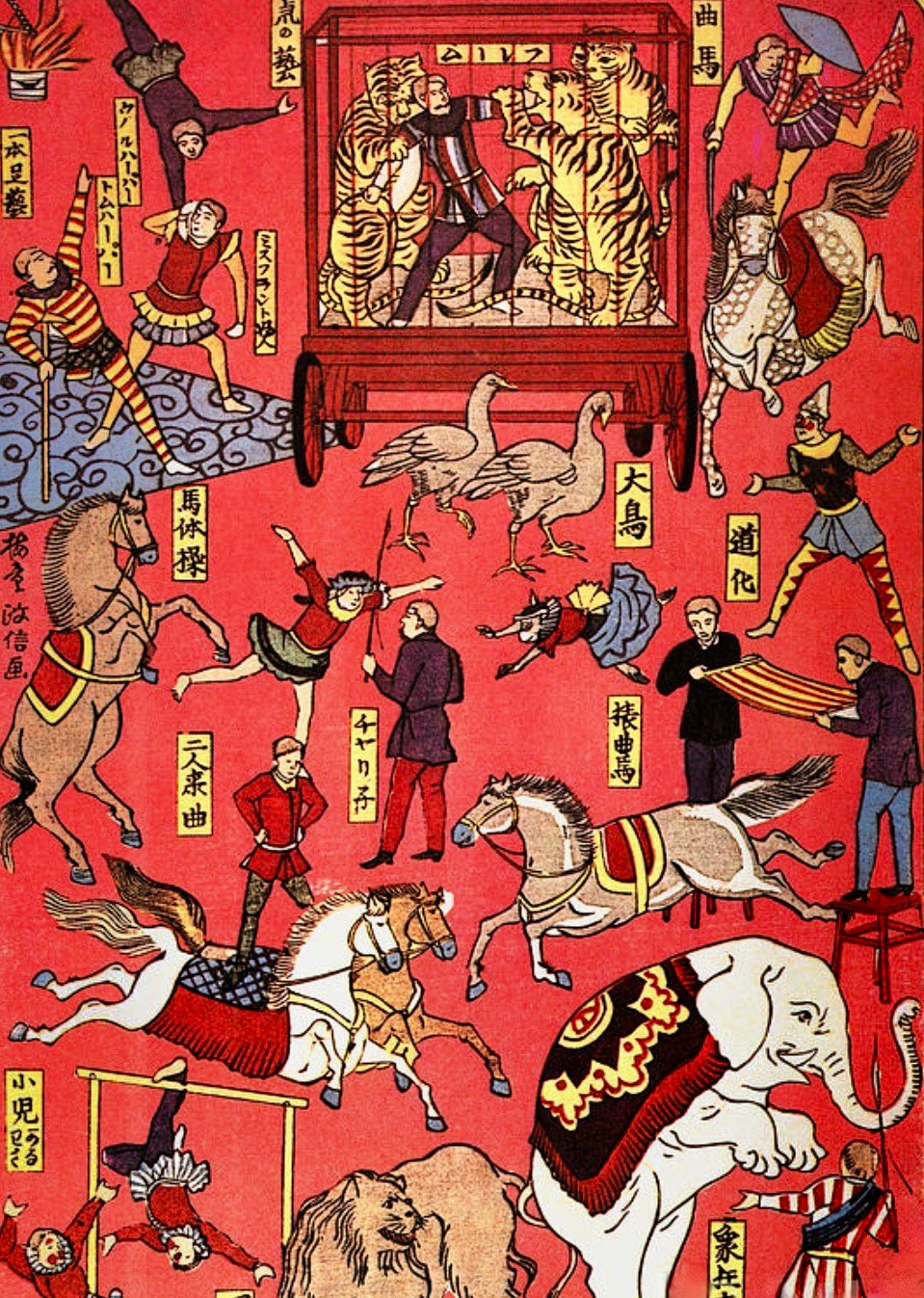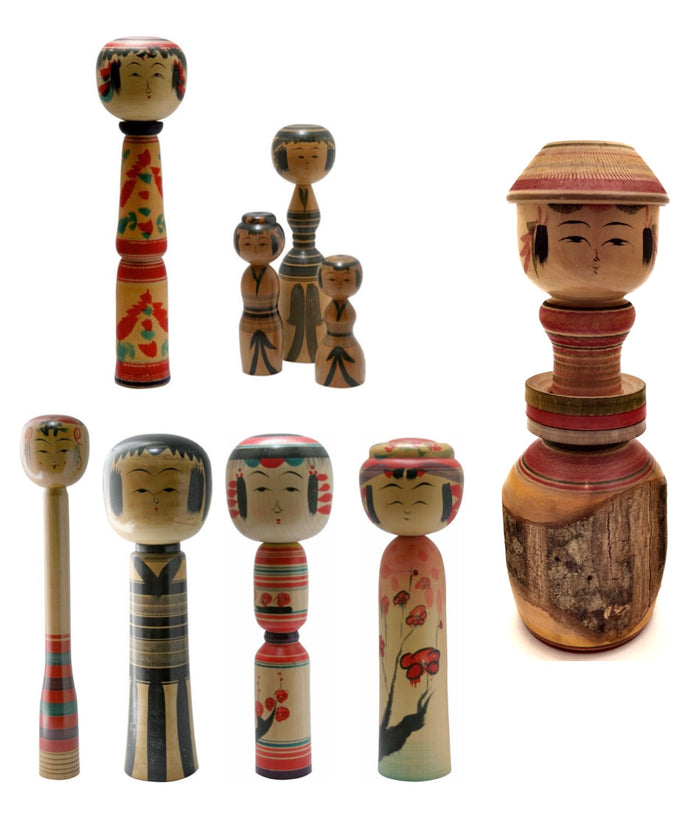



Vintage Japanese Wooden Yajirou Acrobat Toy | Rare Tsuta Family Kijigangu Articulated Toy
Dimensions: 7-0”h x 6-1/2”w x 1-1/2”d
One rarely seen this type of original Kokeshi inspired vintage Japanese wooden toy made by a family member named Tsuta, Fumio a carver who specialize in this subject matter. This family of creators hail from the small farming village of Yajirou-machi near Kamasaki Onsen in Miyagi Prefecture, once a farming village between two, tall mountains. The kiji-shi (woodworkers), divided their time between farming and wood-craft when in the winter time the land was less productive. This type of toy is inspired from the yearly Festivals and Japanese style Circus Arts which played an invaluable impact on the street performers and circus arts in Europe and Americas during the Edo Jidda, (1600-1868). History reports that In 1864, four years before the fall of the Shogunate, Japan’s own great balancing artistes, jugglers, contortionists, top spinners, and conjurers from Tsukuba and Ibaraki in Japan greatly influenced a American Circus troupe that was allowed into Japan to perform in Yokohama. Circus performers additionally reach as far into the creative worlds of Japan influencing the Kokeshi wood carvers producing such toys as the one being sold.
These toys are made from recycled wood and painted in in a veritable rainbow of colors from the usual red and black to green, yellow and even blue and purple as seen in this toy, and all made to attract younger children in the 1950s. The figure is also detailed in the Yajirou style Rokoru mono vertical stripes running around it body. Its head like all the Yajirou Kokeshi having the typical double eyelids and cat shaped nose with side hair fringes and colorful hair and bangs. When the knob on the side is turned the acrobat flips up and around the bar, just like a gymnast with fully moveable joints. The bar and joints of the figure is made of hand forged metal. This toy possesses the warm-heartedness of being a true treasure of a particular time in history. The figure is made of white dogwood, (Mazuki), and has the family impressed stamps on the side of the toy.
See our Vintage Japanese Toy Section: https://mingeiarts.com/collections/vintage-japanese-toys as well as our e-book entitled: A Collector’s Guide: Traditional and Creative Kokeshi and Toys: https://mingeiarts.com/collections/our-books/products/a-collectors-guide-traditional-and-creative-kokeshi-and-toys
Condition: Excellent meaning that the piece retains its original craft/workmanship and functions as intended, showing a wonderful-developed patina and is void of damage, cracks, breakage, or repairs and meets all the standards of the collectible Vintage Traditional Kokeshi Toys.

Japanese Traditional Kokeshi
Yajirou-Kei (Family)
Prefecture: Miyagi
Origin:
This strain of Kokeshi is said to have been an offshoot of the Tougatta strain and is far less refined. That eventually developed into a unique style that remains today. The creators of these dolls hail from the small farming village of Yajirou-machi near Kamasaki Onsen, in Miyagi Prefecture, once a farming village between two tall mountains. The Kiji-shi (woodworkers) divided their time between farming and woodcraft. Those who made kokeshi in their spare time sent their wives to the nearby Kamasaki Onsen to sell their work to tourist shops and onsens.
Collector's note – characteristics/painting style:
The majority of this style has distinct waists, or (kubire), where the body tapers inward, with a wider, flared base similar to a kimono, thus making them very stable. The upper body usually has a hand-painted collar with horizontal stripes encircling the body, as in the Rokoru-moyo style, and vertical stripes running below the waist to the base of the doll. However, Yajirou dolls can also be found with a series of chrysanthemum petals running down the front of the body, or a branch of plum blossoms, as the only decoration. Yajirou dolls are some of the most brightly painted of the traditional family group. Utilizing a veritable rainbow of colours, from the usual red and black to green, yellow, and even blue and purple, they are available in probably the widest range of shapes. Some also have a painted beret-like feature or a bun on their heads, similarly painted with a red center spot. Less common are Yajirou who have conical hats known as Suge-Gasa. Typically seen is one lid or double eyelids and a cat or pick-shaped nose. Yajirou kokeshi have been made from cherry wood, camellia, and maple, but the preferred wood is white dogwood, (Mizuki). And finally, both Yajirou and Tougutta dolls are sometimes created with loose rings circling the waists. Carved from the same wood as the body, which is a very meticulous method! This treatment is referred to as 'Yamiyo' style kokeshi.

Leading, Craftsmen:
Niiyama, Keimi, 1925, (Shirabu, Yamagata) - Master Niiyama, Keimi. No additional published information
Niiyama, Fukutaro, 1898-1965 - No additional published information
Niiyama Fukuo, 1922, (Yajiro Shironishi, Miyagi) - Master: Niiyama, Fukutaro. No additional published information
Niiyama, Hisaharu, 1942-2008 - No additional published information
Niiyama, Sanai (Master) - No additional published information
Oizumi, Kiyoni - No additional published information
Saito Masao, 1932, (Shiroishi, Miyagi) - Master: Sato, Tsugio. No additional published information
Sato Tatsuo, 1928-2009, (Yajiro Shiroishi , Miyagi) - Master: Sato, Imasaburo. No additional published information
Sato Yoshiaki, 1936, (Shiroishi Miyagi) - Master: Sato, Tatsuo. No additional published information
Sato, Koichi, 1936, (Shiroishi, Miyagi) - Master:Hamatsu, Heisaburo. No additional published information
Explore & Learn More about Yajirou-Kei (Family)